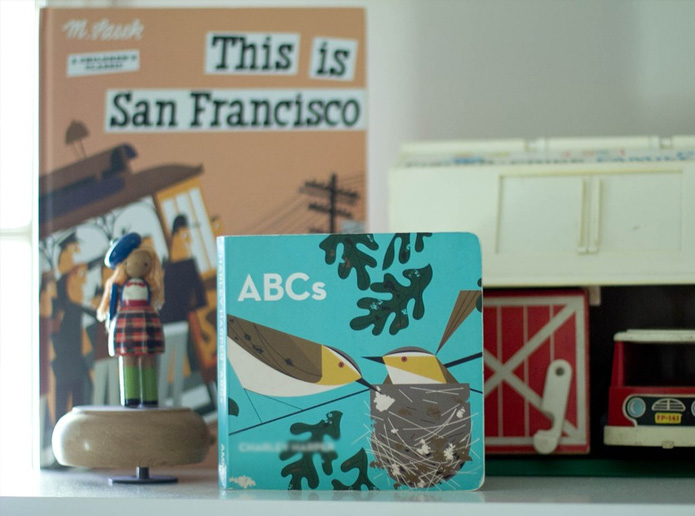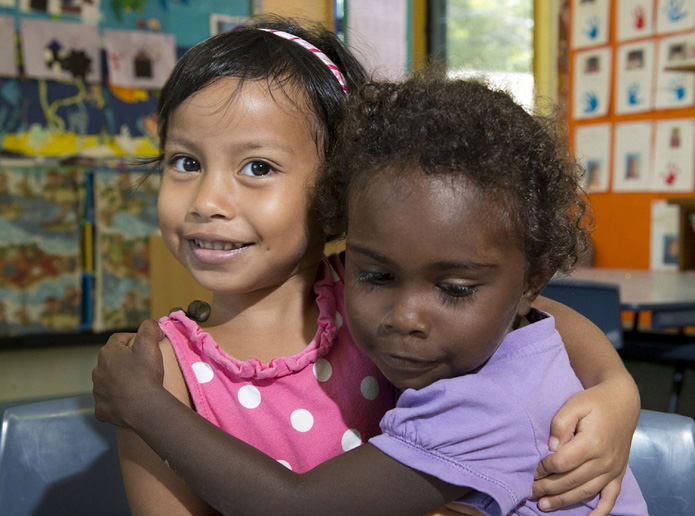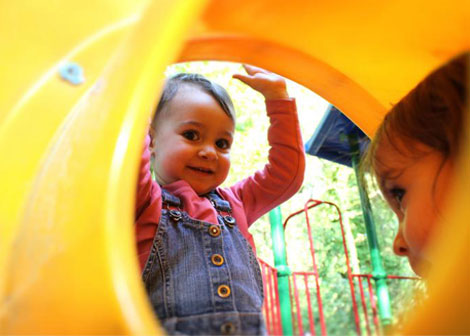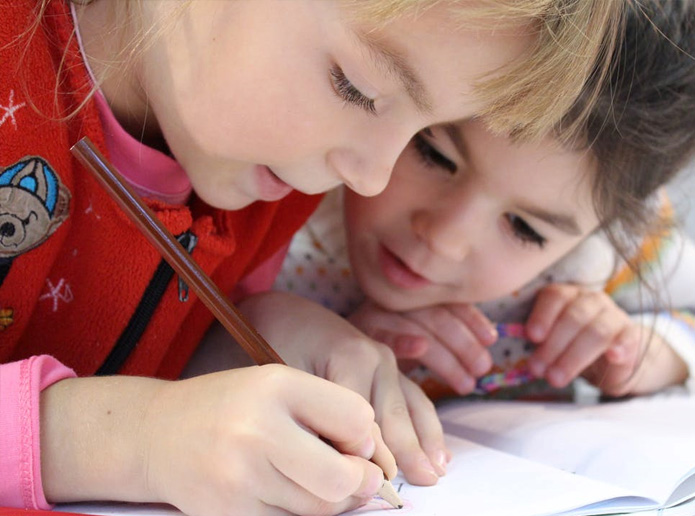Literacy is the ability to read and write. There are many times during the day when we rely on good literacy skills such as when reading or writing a text message, writing a shopping list, reading an email or looking up an address on your GPS or street map.
Just like learning to talk, literacy is a skill that develops over time and begins from birth.
Important literacy skills for your child to learn
As you play and share books together your child is learning the foundations for reading and writing. This includes:
- Learning how to hold a book and turn the pages
- Learning to enjoy and pay attention to stories
- Learning about words and letters
- Beginning to hold a pen and scribble or draw
- Beginning to recognise letters and the sounds they make
- Recognising words in the environment like on signs, in catalogues, maps, packaging, technology buttons
- Listening to rhyme or words that ‘sound the same’
- Recognising the sound that words start or end with
- Breaking words into smaller parts or syllables
These skills will be critical when they start school and learn to read and write in a more structured way.
Developing literacy also relies on other skills like:
- Understanding and using words
- Listening and paying attention
- Fine motor skills (using your fingers and hands)
In order for your child to learn these skills, they need plenty of practice as they play with you every day.
Supporting your child’s literacy skills
You can help your child develop literacy skills simply through sharing books and playing together.
- Talk to your child and show them what words mean. It is important that your child understands what words mean as they will then later make the link to written words.
- Read to your child every day and show them that reading is fun. Check out these great book ideas for different ages.
- Draw and scribble with your child. Help your child have fun practicing these fine motor skills. If they are interested, begin to write and trace letters together.
- Play games and activities with your child that encourage their fine motor skills. For example, rolling, pinching and squeezing while playing with playdough or helping your child do up their buttons when they get dressed.
- Sing songs and rhymes with your child. This helps them learn the meaning of words and also helps them learn to listen to words that sound the same or ‘rhyme’. Explore a range of songs and rhymes for kids here.
- Talk about letters and the sounds they make. Start with the first sound in your child’s name. For example “Your name starts with ‘O’, just like orange and octopus”. Focus on the sound a letter makes rather than the letter name.
- Point out letters and the sounds they make when you are out and about. “See that letter P? That word says post. Post starts with ‘p-uh’, just like pool.”
Five great ways to promote literacy everyday
Share books
- Sharing books together is the most important thing that you can do to help your child learn to read. Try to make reading books part of your everyday routine.
- With your older child, search for letters as you are reading stories together. Use phrases such as “Here is the letter B. It makes the sound b-uh. Can you find one the same? Fantastic, that’s another B”. Remember not to play this game every time you read together. It is important for your child to also have time to focus on the story you are reading to them.
Sound and letter walk
- Go on a walk to the park with your child. Choose a sound and point out objects that start with this sound. For example “let’s be on the lookout for words that start with the sound ‘ssss’. I can see the sky, and a scooter and a sign”.
- Look at the signs as you walk. Point out the letters that you can see. Relate them to letters in your child’s or other people’s names. For example “I can see a ‘D’ for daddy. It makes a d-uh sound. See if you can find another letter ‘D’”
Playdough
- Make letters using playdough. Talk about the sounds these letters make. This gives your child a tactile experience and helps them to also understand how letters are formed.
- Your child may begin to notice the similarities between letters such as d, p, b and q – these letters will often be confused as your child is learning. Be patient and name these letters for your child as many times as they need.
Magnetic letters
- Have magnetic letters on your fridge. Allow your child the time and freedom to play with them independently. Help them spell words that are motivating for them (for example their own name or words like ‘mum’, ‘dad’, ‘dog’, ‘cat’ etc). Name the letters for your child and talk about the sounds they make.
Surprise bag
- Take turns hiding items from around the house inside a bag or pillowcase. Talk about the initial sound of the object as you pull one out of the bag. For example, “fork starts with the ffff sound”. You could also use this activity to clap out the ‘beats’ or syllables in the word.
Explore other great literacy activities for children.
Want to know more?
The Raising Children Network – Developing Literacy
Zero to Three – Early Literacy







